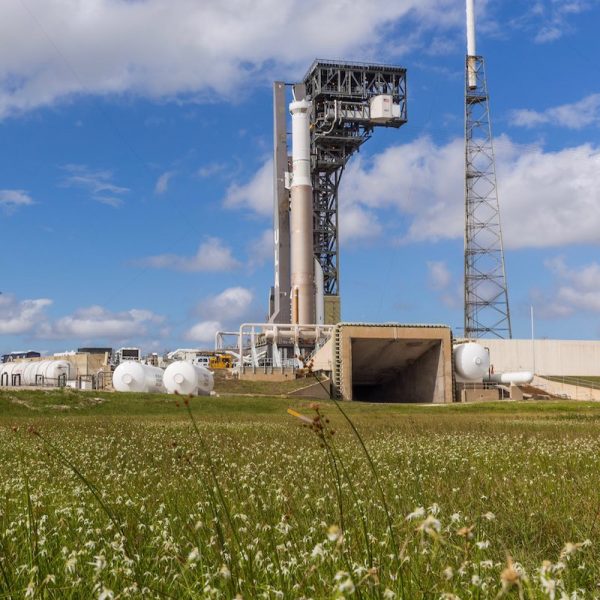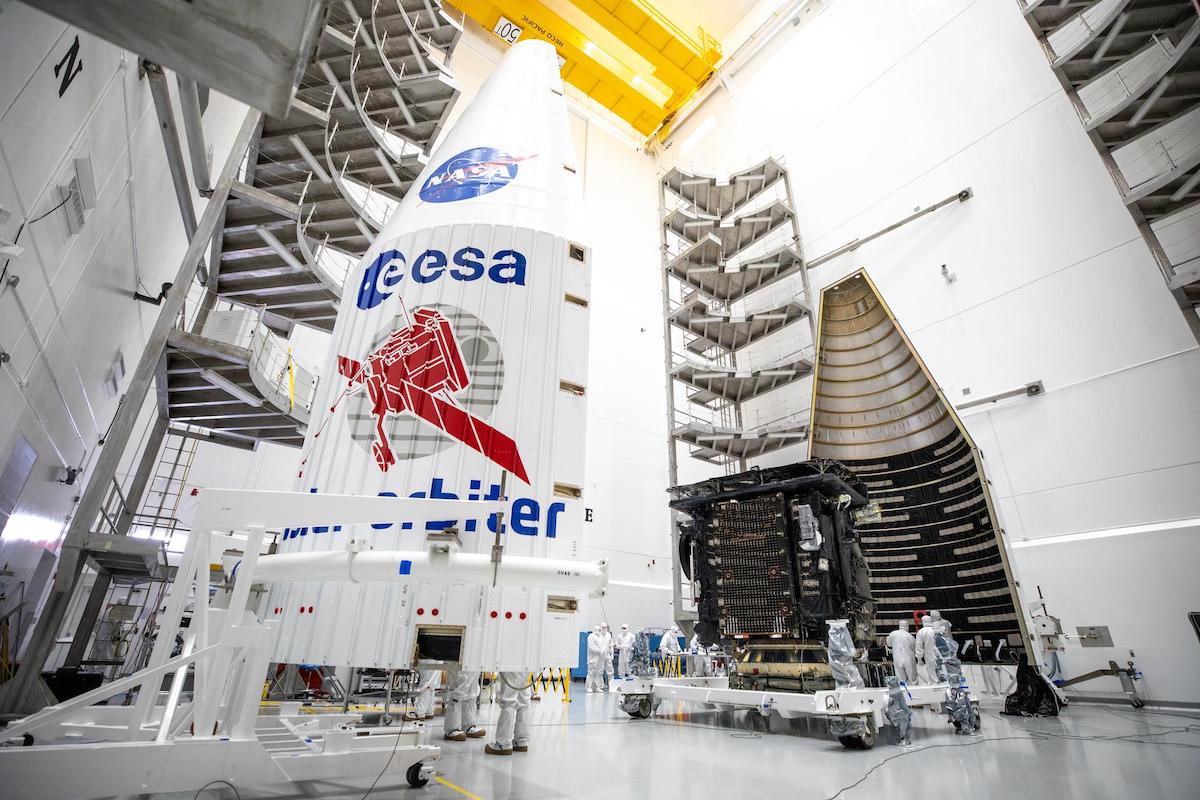Solar Orbiter launch delayed to Feb. 7 – Spaceflight Now

Officials have delayed the launch of a United Launch Alliance Atlas 5 rocket with the European-built Solar Orbiter spacecraft from Cape Canaveral by two days to Feb. 7, a ripple effect from time spent fixing a minor issue last week during a launch vehicle countdown dress rehearsal.
The European Space Agency, which leads the Solar Orbiter mission in partnership with NASA, announced the two-day delay to Feb. 7 on Sunday. The new Solar Orbiter launch window opens at 11:15 p.m. EST on Feb. 7 and extends to 1:15 a.m. on Feb. 8 (0415-0615 GMT on Feb. 8).
The Solar Orbiter mission has a 19-day launch opportunity in February — beginning Feb. 5 — put the spacecraft on a trajectory to reach Venus in December, when the probe will use the planet’s gravity to slingshot into an orbit closer to the sun.
🚀Launch update: @NASA @ESA & @ULAlaunch confirm #SolarOrbiter launch date adjusted to 7 Feb 23:15 EST/ 8 Feb 04:15 GMT/05:15 CET due to rescheduling of the Wet Dress Rehearsal earlier this week.https://t.co/EKs4UjH1QW pic.twitter.com/NKJg1scE2R
— ESA’s Solar Orbiter (@ESASolarOrbiter) January 26, 2020
The two-day launch delay was expected after ULA teams discovered an air conditioning duct leading to the Atlas 5’s Centaur upper stage became disconnected Wednesday before a planned wet dress rehearsal at Cape Canaveral’s Complex 41 launch pad. The wet dress rehearsal is a pre-launch demonstration in which ground teams load liquid propellants into the rocket, and serves as a check of the readiness of the Atlas 5 rocket, and a practice run for ULA’s launch team.
ULA rolled the Atlas 5 rocket back to its vertical hangar for inspections. Teams reconnected the umbilical between the Atlas 5 and its mobile launch pad after determining that gusty winds likely dislodged the duct.
After returning the Atlas 5 rocket to pad 41 Thursday, ULA completed the countdown demonstration Friday, loading super-cold liquid hydrogen and liquid oxygen into the launcher. The Atlas 5 returned to the Vertical Integration Facility, or VIF, south of pad 41 Saturday, where ULA crews will ready the rocket for attachment of the Solar Orbiter spacecraft.
Solar Orbiter was encapsulated inside the Atlas 5 rocket’s 4-meter-diameter (13.1-foot) payload fairing Jan. 20 at the Astrotech payload processing facility in nearby Titusville. Teams will transfer the spacecraft — inside the Atlas 5’s aerodynamic shroud — to pad 41 in the coming days for lifting atop the Atlas 5 rocket inside the VIF.

For the Solar Orbiter mission, the Atlas 5 will fly in the rarely-used “411” configuration with a 4-meter fairing, a single strap-on solid rocket booster, and a Centaur upper stage powered by a single RL10 engine. Solar Orbiter’s launch will mark the 82nd flight of an Atlas 5 rocket since 2002, and just the sixth Atlas 5 to use the 411 version.
Ten scientific instruments aboard Solar Orbiter will measure the sun’s output and take the first detailed images of the sun’s poles.
Scientists will use data from Solar Orbiter, in tandem with measurements from NASA’s Parker Solar Probe, to better understand what causes the solar wind, and what drives the 11-year solar cycle. After a series of gravity assist flybys of Venus, Solar Orbiter’s trajectory around the sun will become tilted away from the plane of the planets, allowing the spacecraft to take pictures of the sun’s poles for the first time.
“Solar Orbiter is clearly a new class in its own,” said Günther Hasinger, director of ESA’s science program. “It has loads of instruments, which will go not as close as Parker Solar Probe, but quite close. Solar Orbiter will also have eyes. Parker Solar Probe can only sense and measure the plasma and the magnetic field, but Solar Orbiter also has six instruments that can really look at the sun, which is quite a challenge when you think it is reaching an environment where it’s about 600 degrees Celsius (1,100 degrees Fahrenheit). It’s like being in a pizza oven, so you have to make sure that you don’t burn the instruments.”
Parker Solar Probe, launched in 2018, faces much hotter conditions, where scorching temperatures would melt any camera exposed to the sun.
Email the author.
Follow Stephen Clark on Twitter: @StephenClark1.






